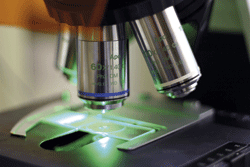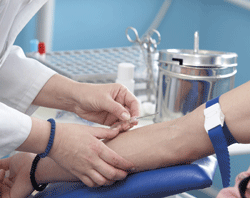
US courts grapple with patent-eligible subject matter
By Susie S. Cheng, Ph.D., J.D., partner at Leason Ellis LLP-Intellectual Property Attorneys, USA.
Over the past few years, patent-eligible subject matter has become one of the most closely watched areas of patent law in the United States. On March 20, 2012, the US Supreme Court issued its decision in Mayo v. Prometheus, 132 S. Ct. 1289 (2012) ("Mayo"), holding that process claims broadly directed to a natural bodily response to a drug are not patent-eligible under 35 U.S.C. §101. Mayo not only pronounced the Supreme Court's guidance for patenting pharmaceutical process inventions, it also raised questions with regard to patent preemption. Shortly after Mayo, the Supreme Court remanded Association for Molecular Pathology v. U.S. Patent and Trademark Office ("Myriad"), on whether isolated DNA molecules are patentable subject matter, to the United States Court of Appeals for the Federal Circuit ("Federal Circuit"). The Federal Circuit's recent decision in Myriad thus sheds some light on how Mayo is judicially interpreted and applied.

In Mayo v Prometheus, the US Supreme court held
that "to transform an unpatentable law of nature into
a patent-eligible application of such a law, a patent
must do more than simply state the law of nature
while adding the words, "apply it". It must limit its
reach to a particular, inventive application of the law."
(Photo: iStockphoto @ Picsfive / @ dra_schwartz)
35 U.S.C. §101 broadly defines patent-eligible subject matter as "any new and useful process, machine, manufacture, or composition of matter, or any new and useful improvement thereof." The US courts have long recognized three judicially-created exceptions for patent-eligible subject matter, namely "laws of nature, natural phenomena, and abstract ideas" as in, for example, Diamond v. Diehr, 450 U.S. 175, 185 (1981). The development of personalized medicine and therapeutic innovation, however, has renewed interest in understanding which pharmaceutical and biotechnology inventions are patent-eligible.
The Mayo decision
The patent claims at issue in Mayo are directed to a method for optimizing therapeutic efficacy for treating a disorder by administering a drug to a patient and monitoring the patient's metabolites to determine the best drug dosage. The method can be summarized in three steps: (a) administering a drug to a subject, (b) determining the levels of the drug's metabolites in the subject's red blood cells, and (c) comparing the measured metabolite levels to predetermined metabolite levels, to either increase or decrease the drug dosage in order to minimize toxicity and maximize treatment efficiency. See Mayo, 132 S. Ct. at 1295-96.
The Supreme Court first identified that the patent claims set forth laws of nature, namely, the correlations between metabolite levels and likely harm or ineffectiveness of a dosage (Id. at 1296). The Court then concluded that the claimed three steps, alone or in combination, were insufficient to transform unpatentable natural correlations into a patentable process (Id. at 1297-98). Specifically, the three steps are "well-understood, routine, conventional activity previously engaged in by researchers in the field" (Id. at 1298). Because the claimed processes lack any "additional features that provide practical assurance", the claims are a "genuine application of laws of nature" (Id.). In fact, the Mayo Court has invoked the patentability sections of the Patent Act, namely novelty (§102) and inventiveness (§103), in determining whether the claimed subject matter satisfies the patent-eligibility requirement in §101. In other words, the Court's analysis of whether the subject matter is patent-eligible hinges on whether the additional steps are novel and inventive - meaning whether they are patentable.
Relying on the precedents - Diamond v. Diehr, 450 U.S. 175 (1981) and Parker v. Flook, 437 U.S. 854 (1978) - the Court stated that the patent claims presented in the Mayo case are weaker than Diehr's patent-eligible claim, where the additional steps of the process integrated the equation into the process as a whole (Id. at 1299). The Court also determined that the patent claims are no stronger than Flook's unpatentable claim, which adds nothing specific to the laws of nature (Id. at 1299). Notably, all scientific inventions are based on and utilize some laws of nature and natural phenomena. The Mayo Court stated that abstract and broad claims would preempt or tie up "the basic tools of science and technological work" (Id. at 1301). According to the Court's policy argument, if the patent claims were upheld, it would threaten the development of more refined treatment recommendations that combine the underlying correlations with later discoveries (Id. at 1302).
Federal Circuit's Response to Mayo in Myriad Gene Patent Case
Perhaps equally as important as the Supreme Court's opinion in Mayo is its impact on subsequent cases and how the Federal Circuit interprets and applies the Mayo decision. In Myriad, the Supreme Court had granted certiorari (legal review), but vacated the judgment and remanded the case to the Federal Circuit for further consideration in light of Mayo.
At the outset in Myriad, the Federal Circuit devoted several paragraphs to stating what the appeal was not about. By doing so, many policy arguments raised in Mayo were circumvented. Most important, the Federal Circuit said that the appeal was not about whether the claims at issue were novel under 35 U.S.C. §102, non-obvious under 35 U.S.C. §103 or that the patent disclosure was adequate in supporting particular claims under 35 U.S.C. §112. The Federal Circuit plainly stated that the issue was patent-eligibility, not patentability. This approach clearly separates, as it should, patent-eligibility from patentability.

(Photos: iStockphoto @ Picsfive / @ dra_schwartz)
The Federal Circuit, in its remanded ruling, frames the question as to whether: (1) the composition of matter claims in relation to the isolated BRCA DNA molecule (BRCA1 and BRCA2 are breast cancer susceptibility genes type 1 and type 2, respectively ); (2) the method claims for analyzing and comparing DNA sequences; and (3) the process claims for screening potential cancer therapeutics involving growing a transformed host cell, constitute patent-eligible subject matter under 35 U.S.C. §101. Distinguishing this from the Mayo case, the Court held that both the composition and process claims are patent-eligible. The Court, however, found that the method claims are not patent-eligible.
With regard to the composition of matter claims drawn to isolated DNA molecules, two points are notable from the Myriad decision. First, the Mayo decision applies to cases involving method claims. As the claims reviewed by the Supreme Court in Mayo are not directed to composition of matter, Mayo does not create a controlling precedent. Instead, the Supreme Court's decisions in Diamond v. Chakrabarty 447 U.S. 303 (1979) and Funk Brothers Seed Co. v. Kalo Inoculant Co. 333 U.S. 127 (1948) are controlling precedents that set out the primary framework for determining the patent-eligibility of compositions of matter, including isolated DNA molecules. The Federal Circuit stated that isolated DNA molecules are not found in nature, but are obtained in the laboratory, are man-made and the product of human ingenuity. While the Federal Circuit recognized that isolated DNA molecules are prepared from products of nature, the same is true of every other "composition of matter"; they are nevertheless different from natural materials. The Federal Circuit thus reiterated that it is the activity of reducing a portion of nature to concrete form that the patent laws seek to encourage and protect.
Second, the Federal Circuit sets forth its arguments in response to the preemption concern raised in Mayo, namely that permitting patents on a particular subject matter would prevent use by others of a law of nature. The Federal Circuit took the view that permitting patents on isolated genes does not preempt a law of nature, since a composition of matter is not a law of nature. The Court further recognized that "a limited preemption is inherent in every patent: the right to exclude for a limited period of time." In addition, the Federal Circuit dismissed the preemption concerns in the context of scientific research. According to the Federal Circuit, "patents are rarely enforced against scientific research, even during their terms."
Turning to Myriad's method claims for analyzing and comparing certain DNA sequences, the Federal Circuit reaffirmed its prior ruling that such diagnostic methods claim natural laws and are not eligible for a patent. The Federal Circuit reasoned that these method claims merely recite the mental steps of comparing two DNA sequences, which is the entire process claimed. As such, it is indistinguishable from the claim reciting a diagnostic method in Mayo, and is thus patent-ineligible.
Finally, the Federal Circuit ruled that a method claim for screening potential cancer therapeutics via changes in cell growth rates of transformed cells is patent-eligible. Since the cells are man-made and not naturally occurring, the claim thus includes more than the abstract mental step of looking at two numbers and "comparing" two host cells' growth rates. As such, it does not simply apply a law of nature. In other words, the transformed, man-made nature of the underlying cells in this type of claim makes it patent-eligible.
The Federal Circuit has therefore not expanded the scope of the Supreme Court's standard for patent-eligibility for the moment. However, it is expected that the legal standards for patent-eligibility in the pharmaceutical and biotechnology fields will continue to evolve. Patent practitioners and legal scholars eagerly await further developments in this area of patent law.
The WIPO Magazine is intended to help broaden public understanding of intellectual property and of WIPO’s work, and is not an official document of WIPO. The designations employed and the presentation of material throughout this publication do not imply the expression of any opinion whatsoever on the part of WIPO concerning the legal status of any country, territory or area or of its authorities, or concerning the delimitation of its frontiers or boundaries. This publication is not intended to reflect the views of the Member States or the WIPO Secretariat. The mention of specific companies or products of manufacturers does not imply that they are endorsed or recommended by WIPO in preference to others of a similar nature that are not mentioned.